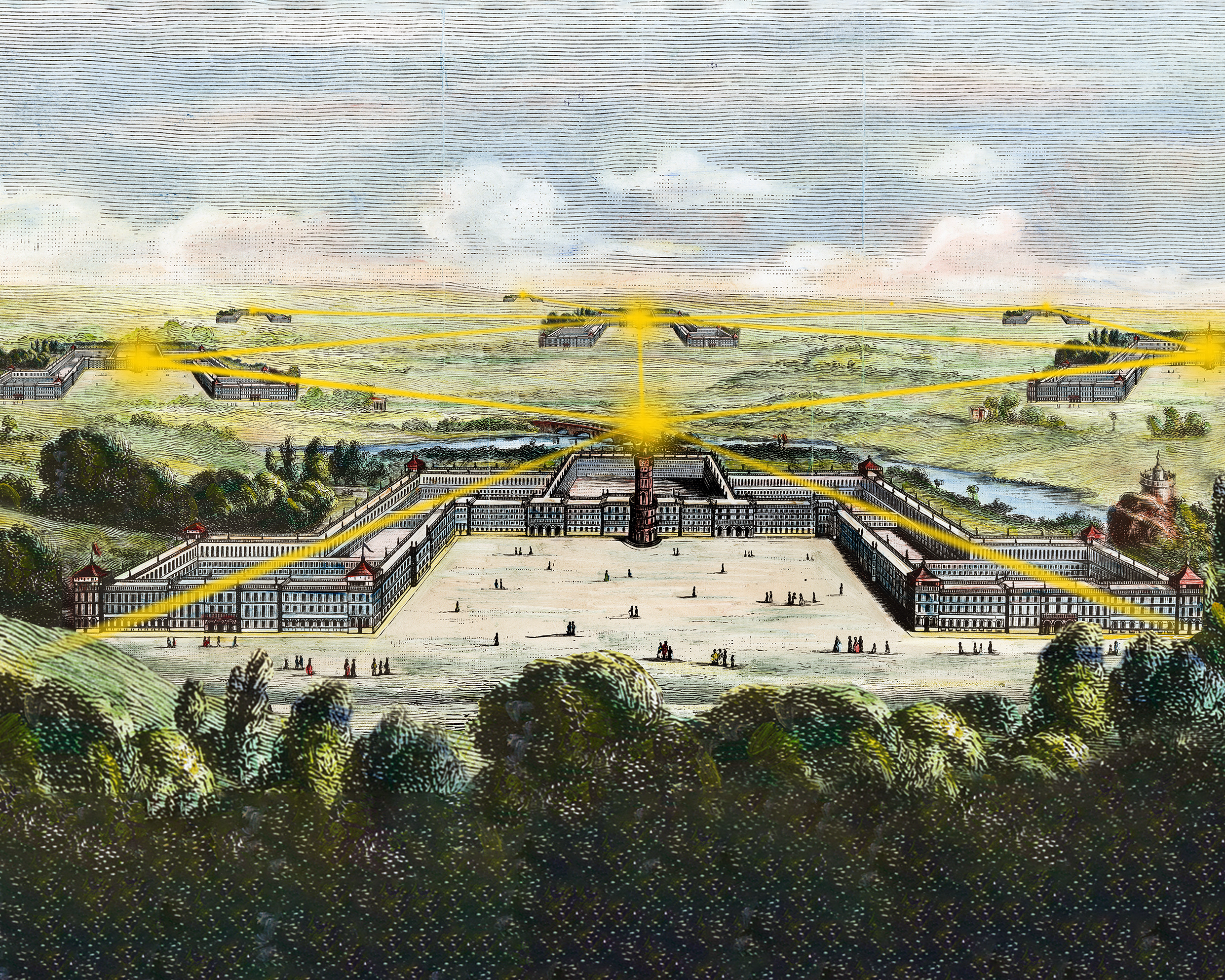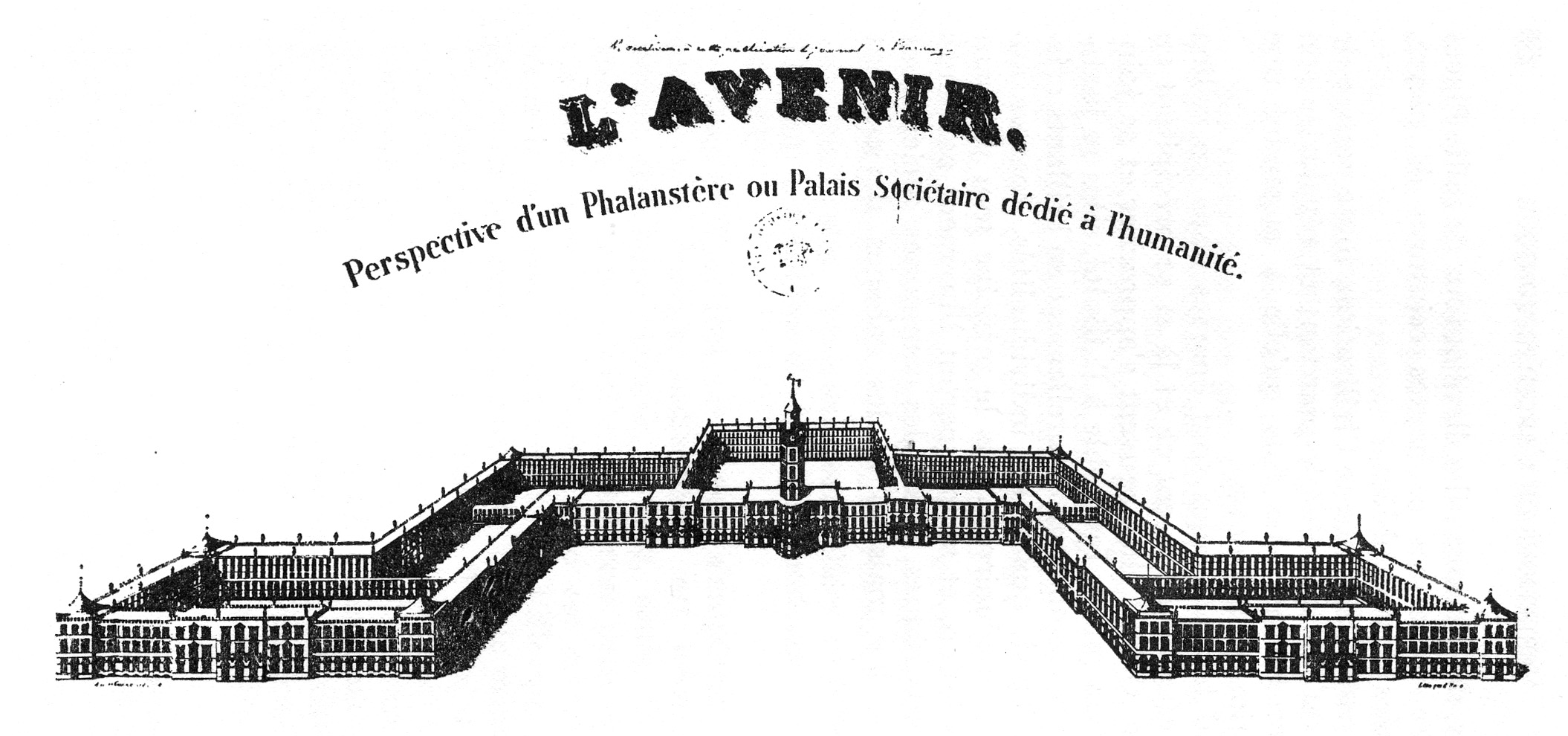Fourierists
![]()
The Ideal Phalanstery
Utopian Socialists
Single-Family Housing
Cooperative
1808

The Ideal Phalanstery
Utopian Socialists
Single-Family Housing
Cooperative
1808
1 Parade Square 2 Winter Garden 3 Arborium/ Orchard with pools and fountains 4 Theatre 5 Workshops & Warehouses 6 Stables 7 Barns

The Phalanstery (phalanstère) was invented by the French philosopher François Marie Charles Fourier in 1808. The phalanx, a base military unit, was transformed into an agriculture-based system for communal living, with echoes of the barracks. Fourier described a vast and continuous building complex, designed to house a self-sufficient group of 1,600 people. In Fourier’s vision, the whole country would be reorganized into a network of Phalansteries.
Fourier’s student, Victor Considerant, architecturalized the Phalanstery, transforming Versailles into a palace for the people during a moment of intense political turmoil, volatility and exchangeability of political systems, and the industrial revolution. Considerant’s rendering of the Phalanstery took an emblem of absolutism and the divine right of kings, and repossessed it by the collective, redefining the architectural model of power. The Phalanstery was a revolutionary counter-model to the fragmentation of the working class in nuclear-family homes, a palace for the people where everyone, not just the privileged aristocracy, could access education, child care, and feasts. Fourier inspired a whole movement of Fourierists who tried to realize his ideas in intentional communities all over the world, turning the countryside into a utopian field of experimentation and freedom beyond the social, moral, and economic confines of the city.


Fourierists End Notes
“The architecture of civilization bears the stamp of egoism, corruption, poverty and discord of society...The Association will create Her Architecture, and it will be one of combination and unity...When men will be associated and united, one great, elegant building will replace hundreds of isolated and miserable constructions of civilization” (Albert Brisbane)
Ungers, Liselotte, and Oswald Mathias Ungers. Kommunen in Der Neuen Welt: 1740-1971. Köln: Kiepenheuer & Witsch, 1972. Page 70.
Preucel, Robert W., and Steven R. Pendery. “Envisioning Utopia: Transcendentalist and Fourierist Landscapes at Brook Farm, West Roxbury, Massachusetts.” Historical Archaeology 40, no. 1 (2006): 6–19. http://www.jstor.org/stable/25617313. Page 15
Ibid, 15
Ungers, 71